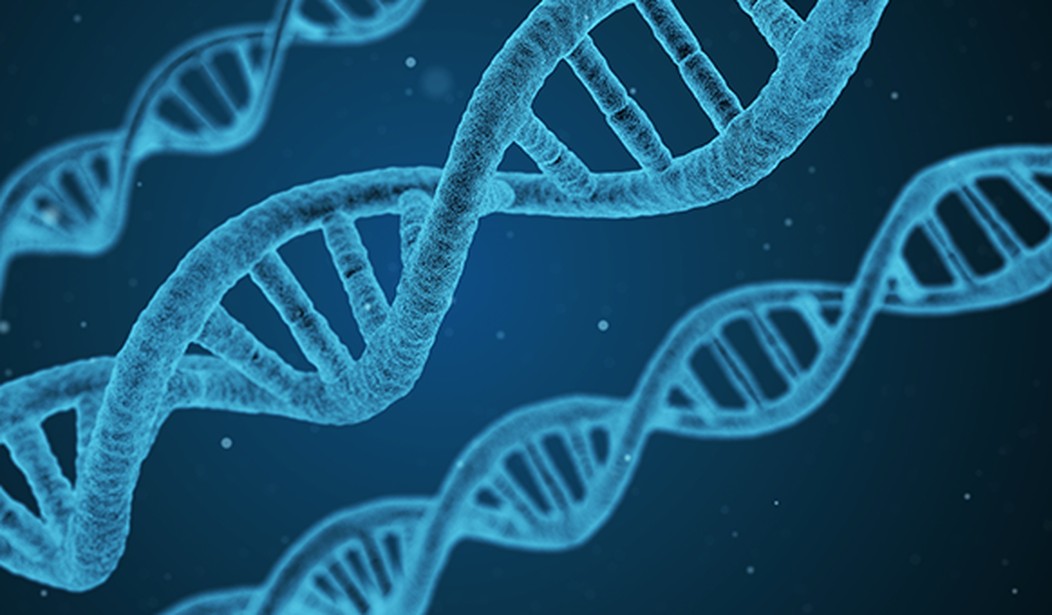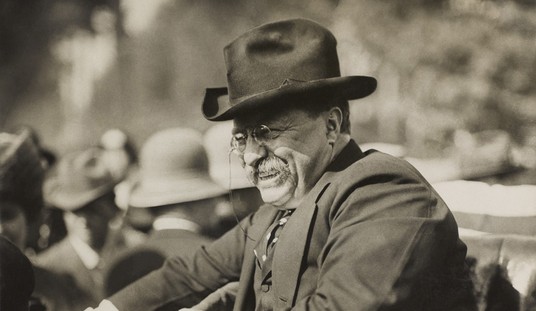Any of us who went to school past the 6th grade are all familiar, these days, with deoxyribonucleic acid - DNA. This stuff is, as the headline says, the code of life, the code by which almost every living thing on the planet develops throughout its lifespan. (Some viruses use RNA, but the jury's still out on whether viruses are really "alive.")
DNA is made up of four bases: Adenine (A), Cytosine (C), Guanine (G), and Thymine (T). The DNA strand, the double helix structure, consists of something that looks like a spiral ladder, with sugar-phosphate uprights connected by the base pairs: A to T, C to G, T to A, and G to C. What makes DNA work is its transcription function. The double-helix structure of DNA can be unzipped, the base pairs disconnected, and then duplicated, as new base pairs join the separated halves, to make two new strands, as part of the cellular reproduction process, mitosis. That's something of an oversimplification, but it will do for now.
On Friday, we learned that the co-discoverer of the paired-helix structure of DNA, James Watson, has died at the age of 97.
BREAKING: James Watson, who helped discover the structure of DNA, has died at 97. pic.twitter.com/fAVqUFDyR6
— The Spectator Index (@spectatorindex) November 7, 2025
James Watson, along with his partner Francis Crick, made this discovery in 1953.
Watson and Crick decided to tackle the problem of DNA structure. With the experimental X-ray diffraction evidence available by 1951, and a growing understanding of the stereochemistry of polynucleotide chains, they felt confident and proposed an initial model toward the end of 1951. It was defined by a three-chain helix with the bases on the outside. But colleagues quickly pointed out this was impossible. Watson and Crick had failed to account for the way the proposed molecule would behave when hydrated: this shape would have completely fallen apart.
It wasn’t until Wilkins showed Watson an especially clear diffraction image taken with a fully hydrated DNA molecule (the so-called “B form”) that Watson and Crick recognized the solution to the problem. This image, known as Photo 51, clearly showed two helices and allowed for very precise mathematical analyses of diffraction intensities. This led Watson and Crick to conclude that the phosphate-sugar chains making up the outside of the twisted ladder ran in opposite directions with the base pairs meeting them perpendicularly at specific distances. In turn, this structure explained how the chains, when pulled apart, could serve as a blueprint for the synthesis of new proteins in the body.
It's impossible to describe adequately how significantly this discovery changed the study of biology, and specifically, genetics. With this, genetics, a science that biologists had been working on since an Austrian named Gregor Mendel experimented with inherited traits in peas, leaped forward. We had known the effects; Watson and Crick showed us the mechanism.
Read More: Men and Women: Now We Know Even Our Brains Are Different
Company Touts 'Major Breakthrough" Toward De-Extincting Dodo. It's Not.
In 1962, James Watson and Francis Crick, along with Maurice Wilkins, who had worked along similar lines without completely deriving the structure of DNA, were awarded the Nobel Prize in Physiology or Medicine.
Watson moved on to study the role of RNA in protein synthesis, taking a position at Harvard, which in those days was still a respected institution.
Watson’s later career was more complicated. He joined the Harvard Biology Department in 1956, where he too turned to questions about the role of RNA in protein synthesis. In 1968, he became the director of Cold Spring Harbor Laboratory (CSHL), making it a center of research in molecular biology. From 1988 to 1992, he led the National Center for Human Genome Research at the U.S. National Institutes of Health, becoming the founding director of the Human Genome Project in 1990.
Then, in 2007, in an interview with the UK's Sunday Times, James Watson made some statements about the relative intelligence levels of various ethnic groups, which led to his dismissal from Cold Spring Harbor Laboratory and the revocation of several of his awards and honorary degrees. Until his death, Watson never recanted those statements.
James Watson and Francis Crick's discovery remains, to this day, a monumental piece of science. It was, without a doubt, one of the greatest scientific discoveries of the 20th century. When I was a college student, taking my required two semesters of genetics, the first breakthrough we studied was that of Gregor Mendel, and after that, Watson and Crick. This discovery led to much of what we know today about genetics. Analysis of DNA has put criminals behind bars, and understanding genetics is now helping us to deal with some pretty awful hereditary diseases, and even has led to the mapping of the entire genome of our species, Homo sapiens, in the Human Genome Project. We aren't the only species to be so mapped. This discovery has opened so many doors in genetics and biology that it's hard to know where to begin.
Was James Watson a perfect man? He was not, but then, who among us is? What he was, was a brilliant researcher, a man who, along with Francis Crick, made one of the most significant discoveries in the history of biology — the study of life.
That's what we should remember him for.













